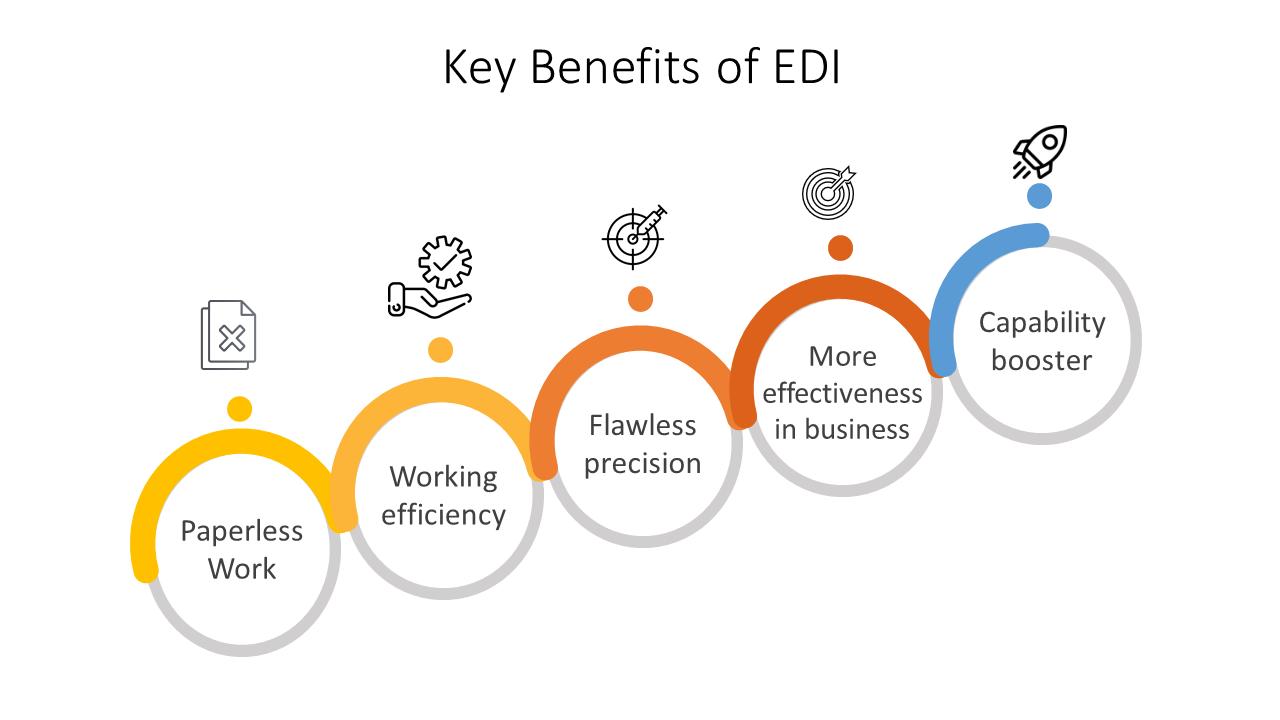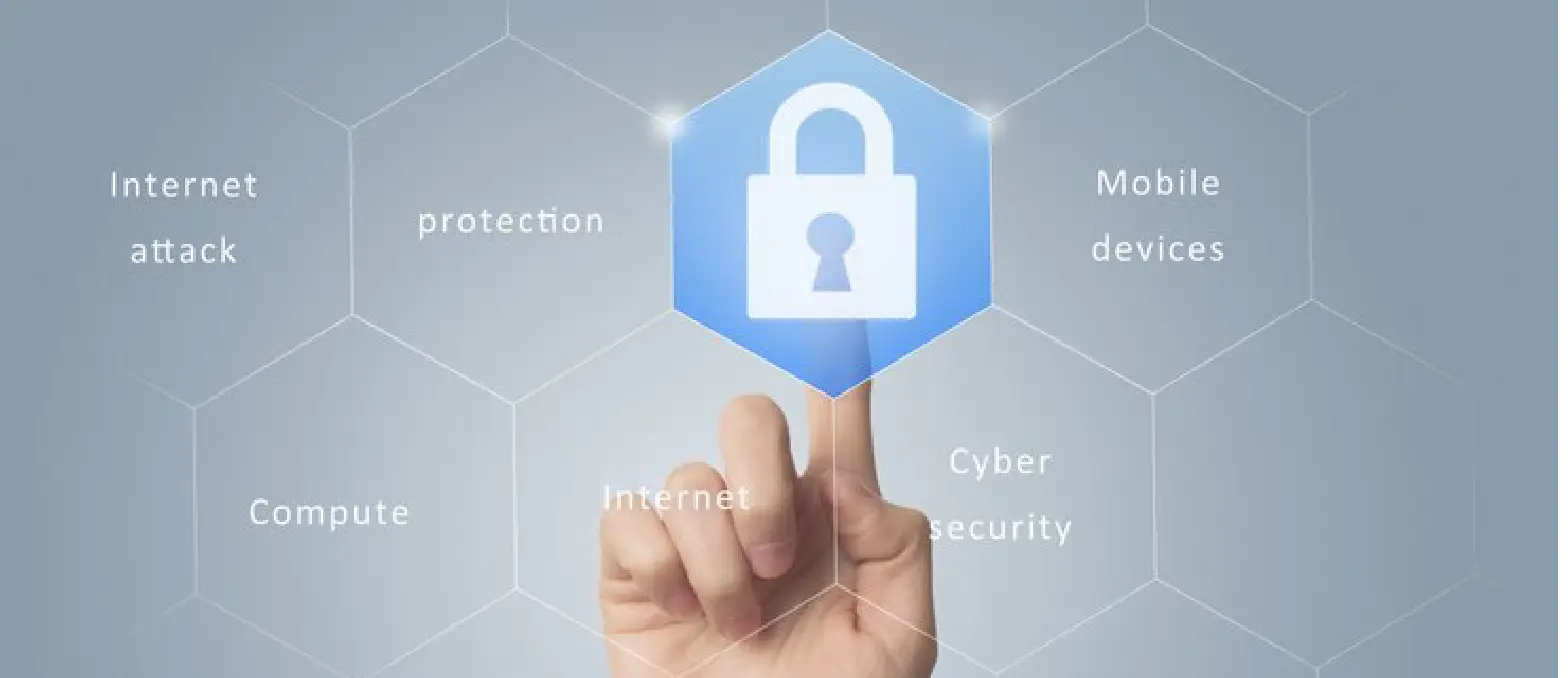Table of Contents
For more than six decades now, EDI or Electronic Data Interchange has been coming into use. Though this technology has had its own ups and downs, it still remains an important part of multi-enterprise integration. However, modern technology and changing corporate requirements have posed a rising threat to EDI recently. In the meantime, end-user integration platforms, which appear to enable multi-enterprise connections more directly than classic EDI models, have been made possible via APIs.
For years to come, the majority of those involved in the business world will continue to hold the belief that EDI integration is essential for B2B transactions. They also admit that innovation in EDI is important to guarantee that businesses gain access to new options. We dive deeper into how EDI support is growing around modern technologies like the cloud, AI, and analytics and how IoT and EDI is transforming in the aftermath of technological changes.
Stay Ahead of The Curve With IoT and EDI Integration
Introducing modern business solution: Interconnecting IoT and EDI solutions
With Electronic Data transfer (EDI) technology, data transfer between two distinct computer systems is enabled through the use of existing formats. Purchase orders, shipment notifications, invoices, and other business documents have long been sent via electronic data interchange, or EDI, which is used extensively across hundreds of industries.
Program Vice President of Supply Chain Strategies at IDC, Simon Ellis, notes: “There have been many contenders to overthrow EDI over the years, and none of them have succeeded because EDI does what it does pretty well”.
The Internet of Things, or IoT, on the other hand, is a network of actual objects, such as furniture, appliances, and cars connected to detectors, software, electronics, and various other devices so they are able to interact with one another and share data.
A recent report by McKinsey estimates that the value of IoT services will grow to $12.5 trillion globally by 2030. But what’s in store for this fast-growing technology?
From its early RFID days, the internet of things has come a long way. According to Statista, there will be 30.9 billion linked devices worldwide in 2030, up from 13.8 billion in 2021. In the coming years we can see a rise in the number of these devices. This is because of the growing internet usage and new uses coming of internet and IoT devices.
IoT devices essentially make real-time data collection and monitoring possible. When used in supply chains, they can enable monitoring at almost every level by sensing variables. For example; temperature, humidity, and speed as well as incidents like a lost package or missed delivery.
IOT services are usually regarded by electronic data interchange consultants as a potentially very useful tool for B2B connectivity. IoT can enable rapid data interchange by providing partners with direct access to centralized data hubs fed by IoT devices, even though it has no bearing on EDI services or how they are used. Trading partners can benefit from increased end-to-end visibility and instantaneous, secure updates of EDI data thanks to the Internet of Things.

Benefits of Integrating IoT with EDI
Since Internet of Things (IoT) devices may provide real-time location data, recipients of products can more effectively plan workers to accept and distribute the delivery when it arrives. As a result, the carrier becomes an essential link in the value chain and offers improved visibility into the progress of the products ordered.
However, in the process of Electronic Data Interchange, the carrier has always been a weak point. With the exception of a tracking number generated by the carrier, EDI documents normally move from the vendor to the customer without any involvement from the carrier. Delivery data may be safely updated instantly with the use of technologies like web services and the Internet of Things, providing businesses with increased visibility.
However, large rigs are not the only vehicles for which real-time cargo information can be communicated via IoT. It includes every kind of transportation, including bicycles, trains, and airplanes. Real-time delivery information is critical to the operation of the supply chain given the rising frequency of adverse weather patterns in the nation.
Businesses may automate their data exchange operations by implementing EDI and IoT, which is one of their key benefits. For instance, sensors on the truck can immediately exchange information via EDI implementation with the recipient’s inventory management system upon delivery of a shipment of products, giving real-time updates on the delivery’s status. This removes the requirement for labor-intensive, error-prone human data entry.
Things to consider when integrating IoT in EDI
The fact that companies using modernized integrations like this one may anticipate a 335% return on investment is perhaps most significant to many, according to global market research firm IDC. However, integrating IoT and EDI have presented us with various exciting possibilities for any business. However this integration calls for careful planning and consideration of various factors.
Data Standardization and Mapping:
EDI thrives on structured data formats. While IoT sensors can generate a wealth of real-time information, it needs translation into a format compatible with your EDI system. This may involve data mapping and filtering to ensure seamless integration.
Security and Data Privacy:
Both IoT and EDI systems handle sensitive data. When integrating them, robust EDI security measures are crucial to protect against unauthorized access and data breaches. Define clear protocols for data encryption and access control.
Scalability and Connectivity:
As you expand your IoT network, ensure your EDI support services can handle the increased data volume. Consider scalable solutions that can accommodate future growth. Additionally, reliable and secure connectivity between IoT and EDI infrastructure is essential.
Standardization and Interoperability:
There are many different devices and communication protocols in the huge IoT environment. Select platforms and devices that follow industry guidelines to guarantee seamless connection with your current EDI services and solutions.
Business Process Integration:
Using real-time IoT data to automate and improve your business processes is where the actual value in this integration is found. Examine your processes to find places where latest technologies in EDI and IoT data can be integrated to start automated processes, including updating shipment statuses or initiating inventory replenishment.
Change management:
Workflows and personnel responsibilities may be impacted by the integration of new technology. Create a thorough change management strategy to guarantee user acceptance and reduce interference. Teach your staff how to take advantage of the combined potential of IOT and EDI, as well as the new processes.
Real World Examples of IoT-EDI integration
Supply chain management, manufacturing, healthcare, and agriculture are just a handful of the industries that EDI is transforming right now. Utilize latest technologies in EDI and IoT applications across multiple industries, draw inspiration from real-world instances, and watch how incorporating these technologies could revolutionize your business.
Using Smart Machines to Optimize Manufacturing
Imagine a factory where tools employ sensors to evaluate their own performance on their own. Real-time data on vibration, temperature, and energy consumption are transmitted through an Internet of Things network. This data seamlessly integrates with EDI systems to immediately trigger purchase orders for new parts as needed. This reduces downtime and makes inventory management simpler. In the logistics and supply chain sector, Internet of Things devices, such RFID tags and sensors, are combined with EDI systems to provide shipment tracking, inventory level monitoring, and effective warehouse management. For instance, because RFID tags can rapidly update EDI provider systems with real-time location and status data, they can be used to improve supply chain visibility and control when affixed to pallets or containers.
Smart Retail
Retailers that integrate IoT and EDI can improve customer satisfaction, streamline inventory control, and automate supply chain processes. Retailers, for instance, can purchase replacement products through EDI provider systems as soon as inventory levels drop by using Internet of Things (IoT) sensors to track product shelf levels. Additionally, for precise inventory tracking and demand forecasting, IoT-enabled point-of-sale (POS) devices may collect sales data and swiftly integrate it with EDI systems.
Monitoring of Healthcare
IoT gadgets like medical sensors and wearable health monitors are combined with AI and ML in EDI systems in the healthcare industry to enhance patient care, automate data sharing, and allow remote patient monitoring. For example, wearable technology enables real-time patient health data collection. It safely transmits data to the EDI systems of healthcare providers, facilitating prompt analysis and response. Better care coordination, lower healthcare costs, and improved patient outcomes are all possible by this integration.
Also Read: Role of Generative AI in Healthcare
Intelligent Energy Utilization
IoT and EDI integration is being used by utilities and energy corporations to optimize energy use, increase grid dependability, and improve customer experience. IoT-enabled smart meters can record energy consumption information and send it to utility companies’ EDI systems for analytics and billing. Smart grid-deployed IoT sensors are also capable of identifying power outages and automatically sending EDI-based messages to utility operators. Therefore, they may respond and restore electricity in a timely manner.

Trends and Opportunities in EDI
The electronic data exchange (EDI) market is expected to grow to $58.98 billion globally by 2030. For many firms, EDI integration is becoming more of a need than a “nice-to-have.” Bigger businesses use integration technology to improve supply chain management, like Walmart. They demand adoption of EDI and implementation by new trading partners as a prerequisite to conducting business.
AI-Powered EDI Solutions
Despite their initial lack of connection, AI and ML in EDI are two important technologies in today’s corporate environment. Artificial intelligence service can and will undoubtedly be combined with electronic data interchange (EDI) to improve business-to-business (B2B) procedures, as we witness AI continuing to permeate almost every aspect of business. EDI-based procedures can benefit from AI automation and machine learning solutions and streamlining in several ways, including:
- Data entry and conversion automation: AI can be used to automatically enter and convert EDI data into various forms, which can reduce errors and save time.
- Enhancing data quality: AI can be used to find and fix problems in EDI data, enhancing the precision of business-to-business transactions.
- Automating exception handling: IT workers can focus on other duties by using AI to automatically detect and handle EDI exceptions.
- Supply chain optimization: AI can be used to assess EDI data and identify opportunities to improve the efficiency of supply chains, such as reducing inventory costs or expediting delivery.
Artificial intelligence development services can be used, for instance, to automate the process of matching inventory levels with EDI purchase orders. This enables the business to promptly recognize and complete orders even if demand or inventory levels fluctuate. Benefits of AI include:
- helps save time and money
- increase productivity for businesses
- streamlining supply chains,
- automating routine operations, and
- enhancing data quality.
EDI Is Essential for Initiatives in Digital Transformation
Following the COVID-19 epidemic, which affected every industry, businesses came to discover how ill-equipped their operations, technology, and procedures were to deal with supply chain changes. Enterprises promptly commenced frantically enhancing their technological infrastructures to tackle these problems.
One important technology that companies started swarming to in order to innovate and change their digital ecosystems is EDI. Businesses saw the benefits of IoT and EDI right away since the best EDI solution providers provide:
- Increased productivity, efficiency and transparency throughout the whole supply chain
- End-to-end process automation
- Reduced response times from customers
- Capabilities for system integration (TMS, WMS, ERP, etc.)
- Data in real-time
- Fewer violations of SLAs
- Notifications of issues and alerts
- More authority
- Quick onboarding of trading partners
The Use of EDI by Small Businesses Is Growing Rapidly
Despite what many people think, EDI is not just for big businesses. In reality, by utilizing EDI technology, small and medium-sized enterprises are experiencing phenomenal growth. There are two reasons for this.
First, there are less resources (money, time, and human capital) available to smaller enterprises. As a result, SME’s can automate procedures with EDI rather than depending on manual process. Investing in EDI enables small and medium-sized enterprises to expand by processing more commercial transactions and trading with larger firms. All things considered, implementing EDI in small business makes it run more smoothly, execute more transactions, and deal with bigger companies.
API and EDI
Data transfer is between two organizations using both EDI and API. They each have unique features as well as advantages and disadvantages. Nonetheless, the optimal combination of EDI and API is one of complementing technologies.
When it comes to B2B integrations with your digital environment, API integration enhances EDI and provides more context, while EDI facilitates data orchestration and downstream business operations. APIs requirement is in order to verify pricing on an eCommerce site or look for inventory in a catalog. If a client chooses to place an order, EDI is useful to get the ordering, shipping, and fulfillment procedures started. You may argue that both procedures are equally important to the success of the company.
Healthcare Is a Robust EDI Industry
The rapidly expanding healthcare sector depends on EDI. The rationale is that EDI protects patient privacy by complying with HIPAA regulations. EDI has adapted to the ever-expanding HIPAA standards, giving it a strong and dependable means of communication for healthcare providers.
However, EDI is not only useful in medical facilities and physician offices. The technology is also useful to businesses in the big pharma and medical device production and sales sectors. These companies use top EDI providers for a variety of purposes, such as delivery windows, secure communication, inventory control, and order accuracy.
The Appeal of EDI Outsourcing Services Is Growing
If a business does not contract out its EDI provider options, it ought to designate one or more internal staff members to handle all EDI-related duties. For example:
- Being in charge of onboarding new trading partners,
- establishing new connections,
- making maps,
- tracking orders,
- keeping an eye out for problems and inconsistencies,
- resolving errors, etc.
This implies that an organization must both locate and compensate a competent worker for their services. Although they are in great demand, EDI specialists are not readily available.
Smaller companies might not have the funds to hire a full-time worker to take care of all of their EDI needs. Large EDI ecosystem management can easily grow complicated and burdensome for internal teams in larger firms. This is where outsourcing of EDI becomes useful.
Businesses can employ outside vendors to handle all EDI-related tasks and need not worry about the complex procedures. Certain EDI partners allow clients to design personalized plans in which they designate
- Which EDI duties will be handled internally?
- Which will be sent to the EDI provider?
Furthermore, because there are so many cloud-based EDI solutions available, most outsourced organizations are able to finish their work totally remotely over the internet.
Do You Want to Streamline Your Supply Chain Operations? Start With IoT and EDI Integration
Conclusion
The Internet of Things(IoT), is a network of electronically and mechanically connected objects, people, and computers. These exchange data without requiring human interaction. IoT devices are widely useful by businesses to monitor stocks, equipment, shipments, and other business-to-business transactions automatically.
Although EDI isn’t the standard for continuous data transmission. When paired with IoT technology, it has the potential to greatly increase data accuracy, boost supply chain visibility, and simplify operations.
EDI is now a fundamental part & is crucial to the success of businesses operating in the business-to-business sector. Accepting it is now essential to remaining competitive and preventing falling behind, not just a benefit.
A3Logics, your EDI implementation partner, is prepared to help whether your company is thinking about starting this EDI journey or wants to upgrade to a more cutting-edge, future-proof EDI solution. Speak with one of our electronic data interchange consultants to learn how to maximize EDI’s potential for your business.
Start Making Your Processes Efficient and Streamlined by Leveraging the Latest Technologies with A3Logics
With a range of IoT and EDI Integration solutions, tools, and services, A3Logics is one of the largest EDI service providers globally, assisting businesses in enhancing their current procedures and implementing new ones.
To develop, send, receive, print, and manage EDI documents as well as integrate with accounting and other back-office systems, there are specialized solutions available. Additionally, to translate messages from corporate application data structures into the TRADACOMS, ANSI X.12, or EDIFACT standards, A3Logics provides a variety of EDI translators and EDI mapping tools.
Organizations may confidently outsource their EDI solutions to A3Logics and benefit from the capacity to interchange a broad range of EDI transactions with business partners, including POs, ASNs, EDI invoices, and EDI payments. Alternatively, if you are a larger organization or a developing mid-market firm, you may take advantage of B2B integration that doesn’t put a strain on your budget or internal resources by using Business Network Cloud Foundation in conjunction with the appropriate combination of self-service tools and outsourced EDI integration.






